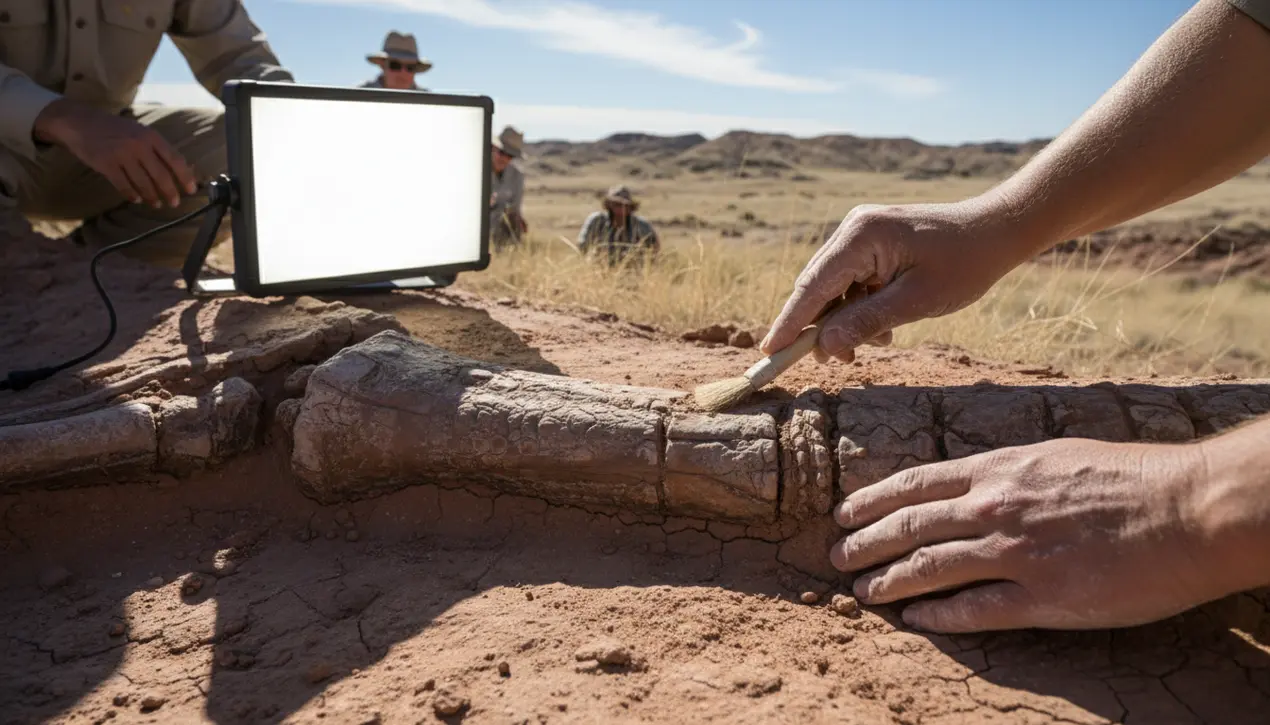
SciencearchaeologyExcavations and Discoveries
Wyoming dinosaur mummies give new view of duck-billed species.
RA
Rachel Adams
2 hours ago7 min read3 comments
In the sun-baked badlands of Wyoming, a discovery of profound significance is quietly rewriting our understanding of prehistoric life, offering a narrative not of scattered bones but of a complete, almost miraculous, preservation. The exquisitely preserved fossils, emerging from a single, remarkable site, belong to a duck-billed dinosaur, a member of the hadrosaur family, but to call them mere fossils is a disservice; these are dinosaur mummies.This is the paleontological equivalent of finding a time capsule sealed with the flesh and form of the creature itself, a stark contrast to the typical skeletal jigsaw puzzles scientists usually assemble. The process of natural mummification, a rare convergence of rapid burial, desiccating conditions, and mineral-rich sediments, has preserved not just bone but skin, scales, and potentially even soft tissue contours, providing an unprecedented, three-dimensional view of the animal's anatomy.For a biologist like myself, focused on the intricate tapestry of ecology and the fragile nature of life, this find is less about a monstrous reptile and more about a living, breathing organism suddenly frozen in time, its story etched into the very landscape. It allows us to move beyond speculation about muscle attachment points and body mass, offering direct evidence of the hadrosaur’s defensive camouflage, the texture of its hide that once felt the Cretaceous sun, and the precise shape of its powerful tail and beak.This level of detail is a powerful tool for understanding its role in the ecosystem—what it ate, how it moved, how it may have evaded the tyrannosaurs that shared its world. It’s a poignant reminder of the deep, interconnected history of our planet, a story of life, death, and preservation that spans millions of years.The data locked within these specimens will fuel research for decades, challenging existing models and forcing us to reconsider the physiology and appearance of one of the Cretaceous period's most successful herbivores. In an era defined by a modern biodiversity crisis, such a pristine window into a lost world serves as a powerful, humbling testament to the resilience and fragility of life on Earth, a single site in Wyoming now holding the keys to a more vivid and accurate reconstruction of our planet's majestic, and vanished, inhabitants.
#featured
#Wyoming
#dinosaur mummies
#duck-billed dinosaur
#fossils
#paleontology
#new species
Stay Informed. Act Smarter.
Get weekly highlights, major headlines, and expert insights — then put your knowledge to work in our live prediction markets.
Comments
Loading comments...
© 2025 Outpoll Service LTD. All rights reserved.